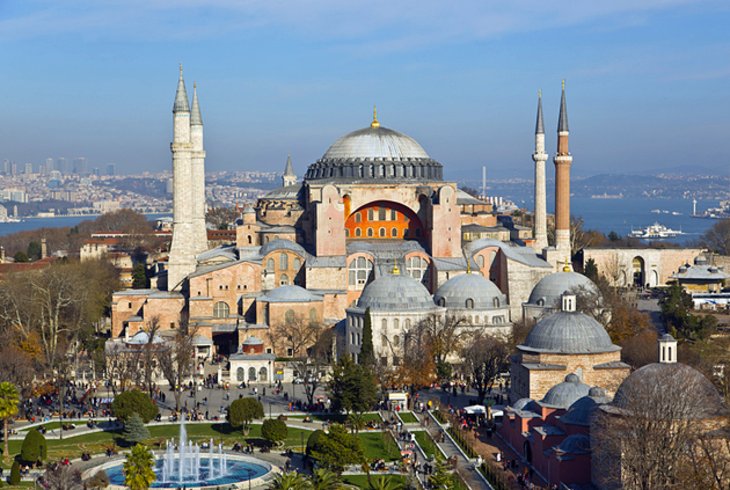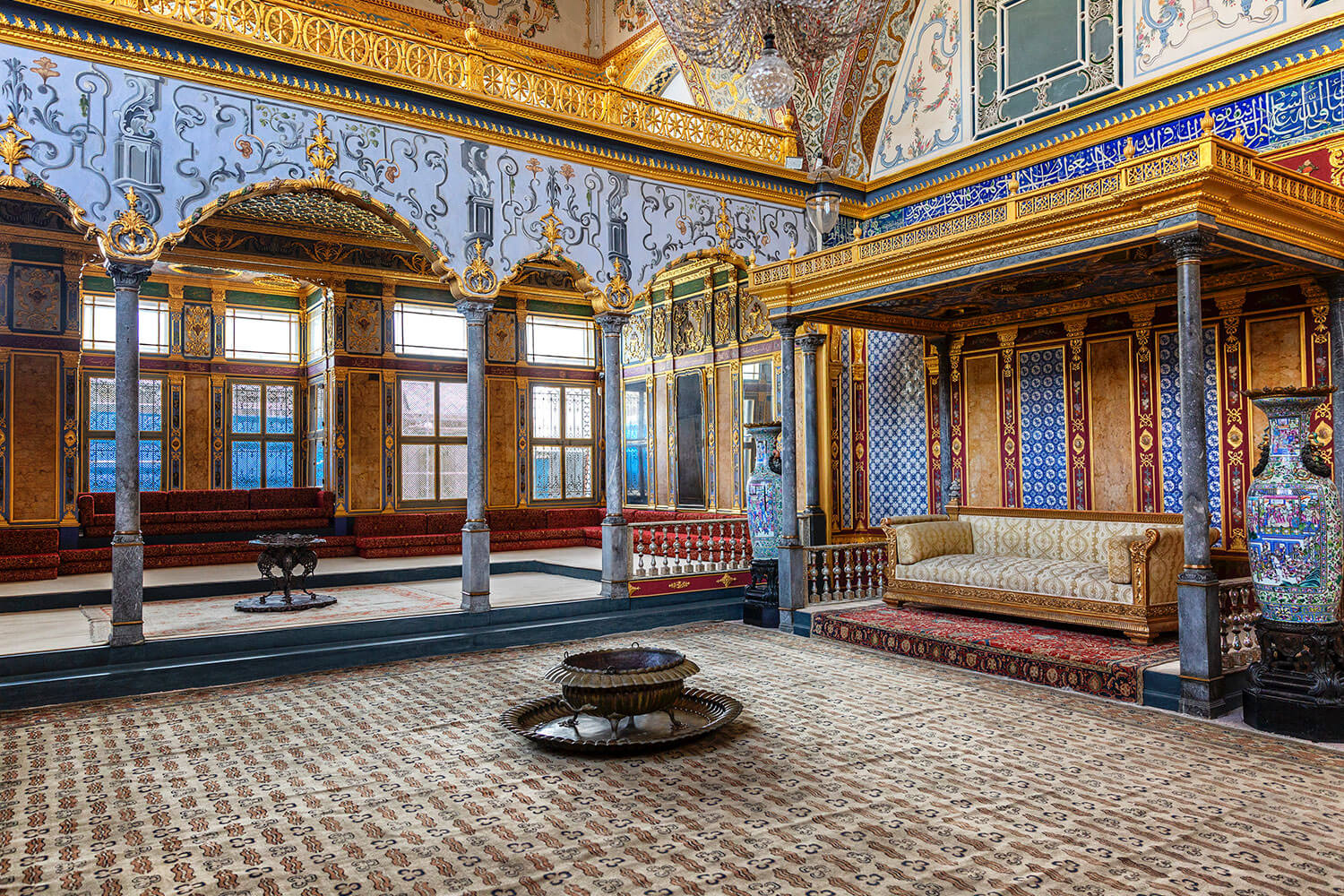Bursting with ancient monuments, left over from many a conquistador’s parade and with landscapes that never fail to impress, Turkey is a dazzling destination that sits between Europe and Asia. Its vivid culture, famous food and vast history will fascinate all who come there, while its magnificent landscapes, from the sunny Mediterranean to the mighty mountains, are breathtaking.
Whether you want to soak up the Byzantine and Ottoman splendour of Istanbul on a city break, chill out on the beach, immerse yourself in history by wandering through ruins such as Ephesus or see the world’s most surreal panoramas of Cappadocia and Pamukkale, the country has plenty to offer. For more tips on what to do and see, check out our list of top tourist attractions in Turkey.
Aya Sofya

The enchanting Byzantine splendour of the Aya Sofya Museum (Hagia Sophia) is one of the world’s most beautiful buildings and one of the highlights of Istanbul and Turkey.
Its stunning exterior is lined with delicate minarets added after the Ottoman conquest, while the gorgeously decorated interior is a wonderful reminder of the power and might of ancient Constantinople. This famous monument is a must-see for any tourist visiting the country.
Ephesus

The mighty ruins of Ephesus is a city of colossal monuments and pillared marble roads not to be missed. It is one of the most complete surviving Roman cities in the Mediterranean, where you can experience what life must have been like in the Golden Age of the Roman Empire.
Cappadocia

Cappadocia’s surreal, swooping cliffs are every photographer’s dream. The rocky ridges and mountain crests reveal a rippling panorama of cliffs or crazy rocky slopes formed over millennia by wind and water.
And if you don’t want to hike for the views, it’s one of the world’s best hot air ballooning destinations. If the moonlight isn’t enough to lure you, the frescoed rock-cut churches of the Byzantine Era are nestled in these valleys when this area was an important early Christian site.
Topkapi Palace

The incredibly magnificent Topkapi Palace takes you into the fantastic, opulent world of the sultans. From here, the sultans of the Ottoman Era carved out an empire that would extend into Europe and down through the Middle East and into Africa.
The decadently opulent tiling and richly decorated interiors are an unforgettable glimpse of the Ottoman power. The surrounding public gardens were once the exclusive domain of the royal court but are now open to the public and offer a peaceful, green escape from the city streets.
Pamukkale

One of Turkey’s most famous natural landmarks is the pure white travertine terraces of Pamukkale (“Cotton Castle” in English), which slope down from the hillside to look like an incongruous snowfield in the middle of a green landscape. While the travertines are a highlight of a trip to Turkey in themselves, at the top of this calcite hill are the vast and sprawling ruins of Roman Hierapolis. This ancient resort city provides yet another reason to visit.
Sumela Monastery
Sumela Monastery, also known as Monastery of the Virgin Mary, is a monastery built into a cliff face with a stunning and secluded layout and is a major attraction for visitors along the Black Sea Coast. With its church interiors filled with dazzling and vivid frescoes, this deserted religious complex is a must for anyone making the long trip to the northeast of Turkey.
Mount Nemrut
The top of the eastern Turkish landmark, the burial mound at the top of Mount Nemrut, is a disintegrated remnant of the mammoth statues that once protected it. This strange and lonely place is one of the most peculiar archaeological sites in Turkey. Giant stone statues of long-forgotten gods look out from the summit, casting an eerie atmosphere over the mountain peak. The perfect time to come is at dawn, so you can watch the statues emerge from the darkness.
Ani
The derelict buildings of the powerful Silk Road city of Ani sit abandoned on the plains close to Turkey’s modern border with Armenia. Once the Armenian capital, Ani’s golden age ended in the 14th century after Mongol raids, earthquake destruction and trade route tussling played a part in the city’s decline.
Aspendos
South of Antalya, the imposing mammoth volume of the Roman theatre of Aspendos celebrates the solemnity and ceremony of Marcus Aurelius’ reign. It is considered the world’s finest surviving example of classical theatre and is one of the sights of the ancient world.
Pergamum
Turkey has abundant Greco-Roman ruins but none can be so romantically placed as ancient Pergamum in modern-day Bergama. Once the home to one of the ancient world’s most important libraries, Pergamum’s remaining temple remnants now preside dramatically on a hilltop.
It is an incredibly atmospheric place to explore with an Acropolis area and a theater cut into the hillside with sweeping panoramic views from its top seating tiers. It’s a gorgeous place to visit if you want to get a real taste of life during the Roman era.
In the comment section below, let us know whether you plan to visit one of these places during your next trip to Turkey.

Leave a Reply
You must be logged in to post a comment.